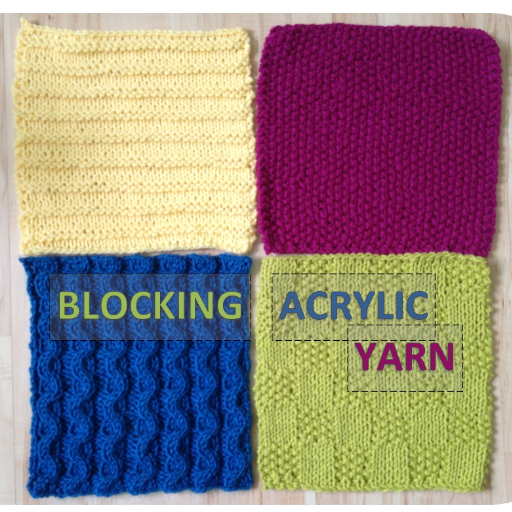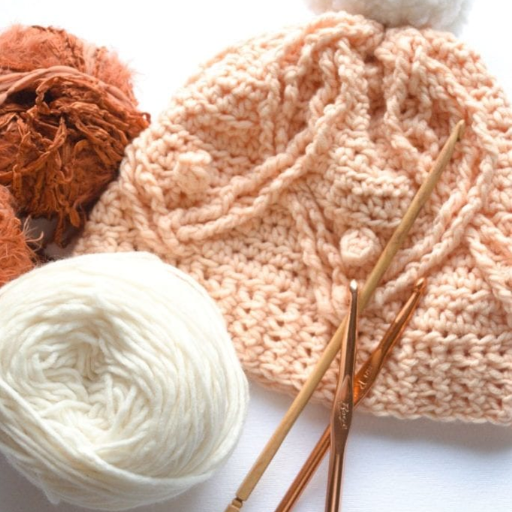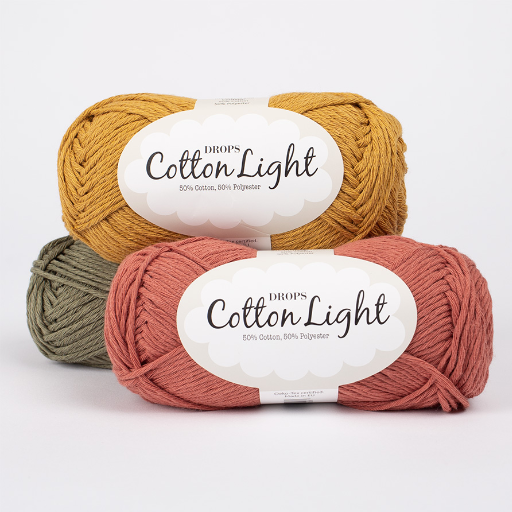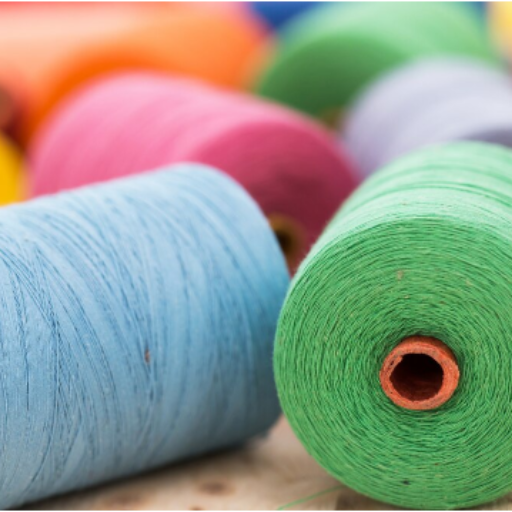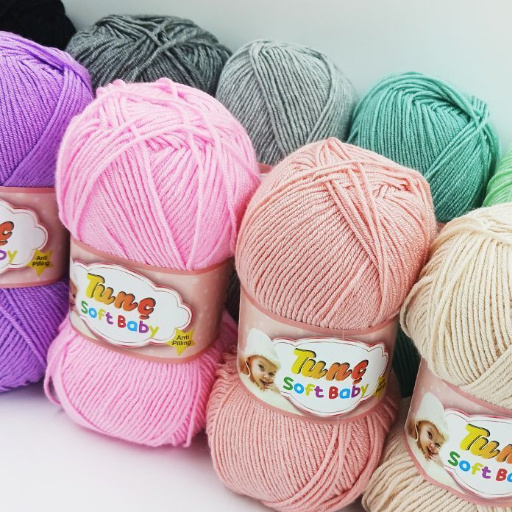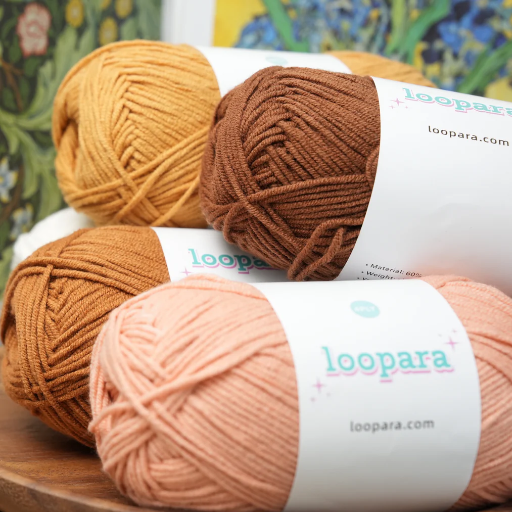Threading a needle comes with many problems, especially for those who have recently begun developing an interest in sewing. Whether as a hobby, passion project, or professional work, one essential skill that everyone who enjoys sewing is proficient in is threading a needle. This can be highly difficult and incredibly time-absorbing for people especially when dealing with finer needles and threads which are much more delicate. This blog post offers an in-depth guide on how to sew more effectively and efficiently. By reading this post you will be exposed to modern tools that are available in addition to needles and thread. We will also cover other issues like the compatibility of the various tools with each other, and other expert advice so that you can easily and quickly finish sewing without getting irritated. This article aims to improve your experience with sewing tools regardless of your skill level when it comes to sewing.
What is the Best Way to Thread a Needle?

The best way to thread a needle involves a combination of proper technique and preparation. First, ensure you have a needle with an eye size appropriate for your chosen thread. Cut the thread at an angle to create a sharp point, reducing fraying and aiding insertion. For additional ease, consider using a needle threader tool, which simplifies the process by pulling the thread through the eye. Ensure proper lighting and maintain steady hands for precision. By following these steps, you can efficiently thread a needle with minimal difficulty.
Understanding the Eye of the Needle
The eye of the needle is the small loop at one end of the needle, designed to hold the thread securely during stitching. Its size, shape, and orientation vary depending on the type and intended use of the needle. For hand-sewing needles, the eye is typically elongated and positioned near the blunt end of the needle, while machine needles feature a smaller eye located closer to the point to facilitate automated threading. The material and manufacturing precision of the needle eye is crucial for seamless threading and effective stitching, as poorly constructed or rough eyes may cause thread fraying or breakage during use. Understanding these design differences is key to selecting the correct needle for your sewing project, ensuring both efficiency and quality in your work.
Choosing the Right Thread for Your Sewing Project
When selecting the right thread for your sewing project, it is vital to consider factors such as thread material, weight, and compatibility with your fabric. The most common types of thread include polyester, cotton, and nylon, each serving different purposes. Polyester thread is versatile and strong, making it suitable for most fabrics, whereas cotton thread is ideal for natural fibers and provides a matte finish. Nylon thread is best suited for heavy-duty or stretch fabrics.
Thread weight, often marked numerically (lower numbers indicate heavier thread), should be matched with the fabric weight and the needle size. A mismatched thread weight can lead to uneven stitching or damage to the fabric. Additionally, always verify that the thread is compatible with your sewing machine to prevent tension issues or thread breakage. For optimal results, test the thread on a fabric scrap before starting your project. By carefully evaluating these aspects, you can ensure consistent, high-quality stitching tailored to your specific needs.
Mastering the Pinch and Hold Technique
The Pinch and Hold Technique can be applied across many sewing and sewing-related activities as it helps maintain accuracy and control during stitching. In this technique, the fabric is pinched lightly between the fingers, which is then used to guide the fabric through a sewing machine or to keep it still during hand sewing. The technique accomplishes even tension, correct seam positioning, and fabric slippage. The essential points are the consistency of the hold, eliminating too much force which may cause puckering, and practicing on scrap fabric to hone precision and control. This technique improves stitch quality and project results significantly, especially in cases of curved seams or complicated designs.
How to Thread a Needle Without a Needle Threader

- Choose the Right Needle
Select a needle with an eye size suitable for your thread. Finer threads will require needles with smaller eyes, while thicker threads need larger ones.
- Cut the Thread Cleanly
Use sharp scissors to cut the thread at an angle. This reduces fraying and creates a pointed tip, making it easier to guide through the needle’s eye.
- Moisten the Thread
Lightly dampen the end of the thread between your fingertips or with a small amount of water. This prevents the fibers from separating as you insert the thread.
- Hold the Needle Steady
Pinch the needle between your thumb and forefinger to stabilize it, leaving the eye slightly exposed for threading.
- Guide the Thread Through the Eye
Slowly push the tip of the thread through the eye of the needle. If the thread does not pass through immediately, gently rotate the needle to find the best angle.
- Pull the Thread Through
Once the thread has passed through the eye, grasp the short end and pull it through several inches to secure enough length for sewing.
By practicing these steps, you can efficiently thread a needle without a threader, even for small or fine needles.
Using the End of the Thread to Your Advantage
One effective method to make threading easier is to prepare the end of the thread properly. Start by cutting the thread at an angle using sharp scissors to create a fine, clean tip that’s easier to push through the needle’s eye. If the thread frays, you can moisten the tip slightly or stiffen it with a small amount of beeswax or a dab of clear nail polish, which helps prevent splitting. Another technique is to fold the thread over the needle to form a loop, then pinch the fold tightly and slide it through the eye—this provides more control and precision. By mastering these simple but effective practices, you can significantly improve the efficiency and ease of threading a needle, particularly with delicate or challenging materials.
Exploring the Forefinger Method for Beginners
The Forefinger Method is a beginner-friendly technique for threading a needle that emphasizes simplicity and control. To begin, place the thread across your forefinger, holding it taut with your thumb. Position the needle’s eye close to the thread and gently press the needle against the thread, allowing it to align naturally. Slowly push the thread through the eye, adjusting your grip for stability as needed. This method reduces strain on your hands and enhances precision, especially for those new to sewing. Its straightforward approach, as highlighted across several reliable resources, makes it an optimal choice for beginners struggling with traditional threading techniques. By adopting this method, you can streamline the threading process and minimize frustration.
Learning to Stiffen the Thread for Easier Handling
When tackling elaborate tasks, stiffer threads are easier to manage. One approach is to use beeswax. It helps in coating the threads which leads to reduced tangling during sewing. Alternatively, fabric-safe thread conditioners can also be used. These conditioners are stiffer relative to beeswax while still being flexible enough to allow easier sewing. For a quick solution at home, the thread combined with glue or hairspray could do the trick. These approaches are popular on numerous sewing websites for good reason, as they combat the challenges posed while dealing with sewing threads.
Can a Needle Threader Make the Process Easier?

Yes, a needle threader can significantly simplify the threading process, particularly for individuals with limited dexterity or poor eyesight. This small, often metal or plastic tool works by guiding the thread through the needle eye with precision and minimal effort. By reducing the challenges associated with manual threading, needle threaders enhance efficiency and accuracy, making them an invaluable accessory for beginners and experienced sewers alike.
Different Types of Needle Threaders Available
Needle threaders come in a variety of types, each designed to cater to specific needs and preferences. The most common types are:
- Simple Wire Needle Threaders: These are the most basic and affordable option, typically consisting of a thin metal wire loop attached to a handle. They are ideal for standard hand-sewing needles and work by passing the wire through the needle eye and pulling the thread back through.
- Automatic Needle Threaders: Often built into sewing machines, these are designed for quick and efficient operation. By using a small mechanism to loop the thread through the needle eye, they eliminate the need for manual threading, which is particularly useful for intricate sewing tasks or frequent needle changes.
- Classic Hook Needle Threaders: Designed for sergers or larger needles, these threaders use a hooked end to grab and secure the thread before guiding it through the eye. Their sturdy, no-frills design makes them suitable for thicker threads or specialized sewing projects.
Each type of needle threader offers distinct advantages, and selecting the right tool often depends on the complexity of the task, the thickness of the thread, and individual user requirements.
Step-by-Step Guide to Using a Wire Loop Threader
- Prepare the Needle and Thread
Start by selecting the needle appropriate for your project. Hold the needle steady with the eye facing upward, ensuring a clear view of the opening. Cut the thread to your desired length and trim the end at an angle to avoid fraying.
- Insert the Wire Loop Through the Needle’s Eye
Gently push the wire loop of the threader through the eye of the needle. The loop should protrude far enough to allow easy insertion of the thread.
- Place the Thread Through the Wire Loop
Pass the thread through the center of the wire loop. Ensure the thread is positioned securely but not so tightly that it compromises the threader’s ability to pass back through the needle.
- Pull the Wire Loop Back Through the Needle’s Eye
Carefully pull the wire loop threader back out of the needle eye, bringing the thread along with it. Maintain a steady grip to avoid bending or damaging the wire loop.
- Verify Proper Threading
Confirm that the thread has passed fully and cleanly through the needle eye. Adjust the length of the thread ends as needed for your sewing project.
By following these steps, you can efficiently thread any suitable needle using a wire loop threader, ensuring accuracy and minimizing frustration during setup. Proper care in handling the threader and thread will enhance both durability and efficiency in daily use.
Benefits of Using a Needle Threader in Your Sewing Projects
There are several benefits associated with the use of a needle threader, which serves to ease the process of sewing for novices and experts alike. First of all, it makes the job less stressful and annoying for those who have problems with mobility, eyesight, or trembling hands. With a needle threader, the chance of cross-threading or the thread ends tangling up is reduced as the thread is guided into the eye of the needle.
Secondly, using a needle threader is less cumbersome in terms of time spent. A manually threaded needle can be laboriously and painstakingly threaded with complete precision using this device, thus alleviating usage time. In addition, this time-saving feature is even more noticeable when a smaller needle or several threads that are cumbersome to thread manually are used.
Finally, the effective use of a needle threader guarantees that both the thread and the needle are protected. The tool also alleviates too much pulling and damage to the thread whilst the eye of the needle is also pulled gently without damage. In conclusion, needle threaders not only increase speed and accuracy of setup, but also the durability of sewing materials, thus proving them indispensable in any sew kit.
How Do You Thread a Needle and Tie a Knot?

To thread a needle, begin by selecting a thread suitable for the needle size and cutting it cleanly to avoid fraying. Hold the needle securely and position the thread across the eye, using a needle threader if necessary for precision. Once the thread is through the eye, pull it through until the length is even or adjusted to your preference for the project. To tie a knot, take the two ends of the thread, loop one end over the other to form a circle, and pull through to tighten. Repeat this process as needed to create a secure knot that will hold during sewing.
Simple Techniques to Tie a Knot After Threading
To form a knot after threading a needle, first, make sure to gather both ends of the thread. Using your index finger, wrap until there is a loop in the thread, then roll the loop using your thumb while pinching the thread until it comes off your finger. Pull the loop towards you to form a knot at the end of the thread by repeating these final few steps to tighten it further. A variation of this technique is the “double knot technique.” Once the needle is threaded, keep the two ends of the thread parallel, cross one end over the other to create a knot, and make sure to pull and tighten it. For enhanced accuracy when dealing with delicate materials, consider using a surgeon’s knot. Instead of looping around the first the first knot, tie the thread once or twice then make sure that it is secure/semi-tight around the knot. All four techniques rest on the same principles and guarantee that the fabric will not slide off during sewing.
Ensuring a Secure Knot for Sewing Projects
To ensure a secure knot in sewing projects, it’s critical to apply proper techniques suited to the fabric and thread type. Key recommendations based on expert sources include the following:
- Single and Double Knots: Begin by threading the needle and matching the thread ends. Tie a standard knot by crossing the threads and pulling tight or use a double knot for additional strength, repeating the process to create redundancy and prevent slippage.
- Surgeon’s Knot: For fabrics requiring extra precision or grip, implement a surgeon’s knot. This involves looping the thread twice through the initial knot before pulling tight, providing enhanced tension and stability.
- Tailor’s Knot: A straightforward method to secure fabric layers involves forming a loop that integrates with the fabric itself during sewing, effectively locking the thread in place.
- Thread Conditioning: To reduce fraying and achieve tighter knots, apply a thread conditioner or beeswax. This technique enhances thread integrity and ensures smooth knot formation, especially with fine or delicate fabrics.
By employing these methods, you can prevent unwinding knots and slipping threads, delivering durability and consistent sewing results across various types of projects.
What are Some Tips and Tricks for Easier Needle Threading?

- Use a Needle Threader: A needle threader is a small, convenient tool that simplifies the process by guiding the thread through the eye of the needle effortlessly.
- Cut the Thread at an Angle: Trimming the thread end at a sharp angle reduces fraying and makes it easier to pass through the needle.
- Moisten the Thread: Slightly dampening the end of the thread can help stiffen it, making it easier to push through the needle’s eye.
- Use Adequate Lighting: Proper lighting helps you see the needle’s eye and thread, reducing strain and improving accuracy.
- Choose the Right Needle: Match the needle size with the thickness of the thread to ensure compatibility and easier threading.
By applying these methods, you can improve efficiency and reduce frustration while threading needles.
Using Best Tips and Tricks from Experienced Sewers
In masterfully threading needles, obstacles ‘threading techniques’ for beginners are backed by the experience of sewers and consist of precise tips and basic tools. Firstly, always have the end of your thread cut clean and sharp to prevent fraying. As a general guideline, always use a threader to make your life easy, and focus more on efficiency while getting it done accurately. Both novices and pros need to have it as their primary tool. Furthermore, if you use thicker threads, make sure you buy needles with bigger eyes so that it gets easier for you and saves you time.
Altering the brightness is yet another essential tip. For perfect vision while working on finer details, high quality LED task lights or natural daylight should work. Try using slight thread stifeners like clear nail polish or bees wax for tough matters. Both hold the structure of the thread while allowing slight softness. With the integration of these simple solutions from trusted sources, even the most difficult sewing designs can be done with ease.
Exploring Hacks for a Stress-Free Needle Threading
Needle threading, while seemingly straightforward, can sometimes be a repetitive and frustrating task. To simplify the process, here are concise, expert-backed hacks compiled from authoritative sources:
- Use Thread Conditioners
Applying a thread conditioner like beeswax or thread gloss can make the thread stiffer and easier to guide through the needle’s eye. This hack reduces fraying and enhances control.
- Leverage Tools for Efficiency
Needle threaders, especially automatic ones available on modern sewing machines, save significant time and effort. Magnetic threaders are also ideal for those with dexterity issues or poor vision.
- Improve Visibility and Handling
Always work under bright, direct lighting such as LED lamps, and opt for contrasting background colors to make the thread more visible. For instance, place a white piece of paper behind the needle to highlight the eye.
- Master the Fold-and-Pinch Method
Fold the thread near its end to create a loop, pinch it firmly between your fingers, and guide it through the needle’s eye. This method minimizes handling and reduces fraying.
- Upgrade to Specialty Needles
Self-threading needles, also known as side-threading or easy-thread needles, feature an open slot that allows threads to slide directly into the eye, eliminating the need for manual threading.
By adopting these techniques, needle threading can be transformed into a quick and stress-free task, allowing sewers to focus on their creative projects with ease and precision.
References
Frequently Asked Questions (FAQ)
Q: What is the easiest way to thread a needle?
A: One of the easiest ways to thread a needle is to use the “pinch the thread” method. Simply hold the thread end between your thumb and forefinger, and gently push the thread through the eye of your needle. This technique works well when eyesight isn’t great or when you’re working with a small needle.
Q: How can I thread a needle if my eyesight isn’t great?
A: If your eyesight isn’t great, you can use a needle threader, which is a handy tool that helps guide the thread through the eye. Additionally, choosing a needle with a larger eye can make it easier to thread.
Q: Are there easy ways to thread a sewing machine needle?
A: Yes, many modern sewing machines come with an automatic needle threader that makes threading a machine needle quick and easy. If your machine doesn’t have this feature, you can manually guide the thread through the eye of the needle using steady hands and good lighting.
Q: What should I do if the thread keeps slipping out of the needle?
A: Ensure that you have a long enough piece of thread through the eye of the needle. Also, “rub the thread” between your fingers to remove any fraying. If the problem persists, try using a thicker thread or a needle with a larger eye.
Q: How do I prevent my thread from tangling while I’m sewing?
A: To prevent tangling, hold the thread taut as you sew and ensure it’s evenly wound on the spool. Using a thread conditioner can also help keep the thread smooth and tangle-free.
Q: Can I use extra tools to make threading a needle easier?
A: Yes, extra tools like needle threaders and magnifying glasses can be very helpful. Needle threaders help you push the thread through the needle while magnifying glasses assist in better visibility.
Q: How do I thread a needle with a thicker thread?
A: For thicker thread, it’s best to use a needle with a larger eye. Carefully guide the thread through the larger eye, and ensure the thread end is not frayed by cutting it cleanly.
Q: Is there a transcript of steps for threading a needle available?
A: While there may not be a specific transcript, many online tutorials provide step-by-step guides and videos demonstrating how to thread a needle, offering a visual aid that acts as a transcript.
Q: What is the best way to hold the thread while threading a needle?
A: The best way to hold the thread is to grip the thread end between your thumb and forefinger. This allows you to control and guide the thread accurately through the eye of the needle.








